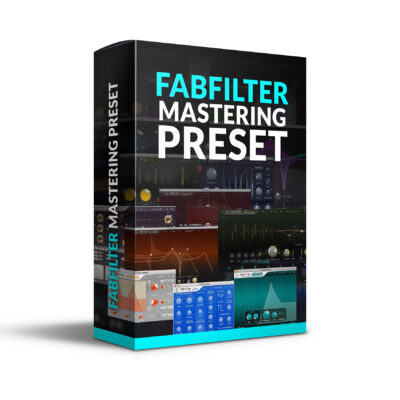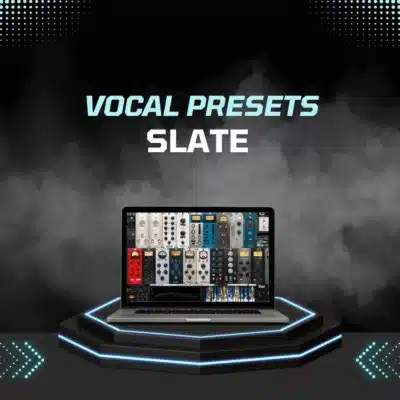Introduction: Classic Console DNA, Modern Plugin Mindset
In today’s saturated plugin market, standing out requires more than just emulating vintage gear; it demands innovation that aligns with contemporary mixing workflows. Kiive Audio’s K-Strip achieves this by integrating elements from three iconic channel strips—the Neve 1063, API 550B, and SSL E-series—into a single, versatile plugin.
K-Strip offers console-style EQ, compression, saturation, gating, and transient shaping within a streamlined interface. What sets it apart is the flexibility to switch between console “flavors” on the fly, allowing users to blend tones from different eras. For instance, you can combine the harmonic warmth of a Neve preamp, the mid-forward aggression of an API EQ, and the fast, snappy compression of an SSL bus compressor—all within one plugin.
In this review, we’ll delve into each section of K-Strip, compare its emulations to industry-standard plugins, and evaluate its performance in real-world mixing scenarios. We’ll also highlight standout features—such as mid/side processing and visual gating—that enhance its utility beyond traditional console emulation.
Let’s dive in
Design and Workflow: Familiar Feel, Flexible Setup
When you load up Kiive Audio’s K-Strip, it’s clear the goal wasn’t to wow you with flashy graphics—it’s clean, straightforward, and laid out like a classic channel strip. Everything flows left to right: saturation and preamp controls on the far left, followed by EQ, compression, and then a master section that houses your gate, transient shaper, and stereo controls.
It’s familiar territory if you’ve used channel strips before, but what makes K-Strip stand out is its flexibility. Each of the core sections—saturation, EQ, and compression—lets you choose between three console-style flavors: N (Neve), A (API), and S (SSL). That means you’re not tied to one sound across the whole strip. You can run a Neve-style preamp into an API EQ and finish with an SSL compressor, or mix and match however it suits the track.
The plugin’s layout makes that easy to experiment with. All the controls are responsive and logically placed, and even some of the more advanced features—like odd/even harmonic blend, sidechain filters, or stereo width control—are right there on the surface. No hidden menus or sub-pages to dig through.
Saturation Section: Console Color on Demand
The saturation section in K-Strip is simple at first glance, but there’s more under the hood than you might expect. You get a trim control, a mix knob (which is always nice to see), and the ability to switch between Neve, API, and SSL-style tones.
Each one brings its own flavor. The Neve-style saturation is warm and rounded, great for adding body to vocals or softening up a harsh top end. The API setting pushes more aggressively in the mids, giving you that forward, slightly edgy tone that cuts through a mix. And the SSL flavor sits somewhere in between—tighter, more focused, a bit cleaner.
What’s also nice is the odd vs. even harmonics toggle. Even harmonics tend to sound smoother and more musical, while odd harmonics bring out more bite and character. Having both options—plus the ability to blend them via the mix control—gives you a lot of range to shape things without overdoing it.
There are also sidechain filters built into this section, which help keep the low end from hitting the saturation circuit too hard—useful when you want to drive something without muddying up the bottom.

EQ Section: Three Distinct Tonal Profiles
K-Strip’s EQ module gives you access to three classic styles: Neve 1063, API 550B, and SSL E-series. Each mode switches the entire EQ behavior—not just the curves, but how it reacts to boosts and cuts.
• N Mode emulates the 1063. Four bands, including dual mids, offer smooth, musical shaping. It’s forgiving and works well on vocals, overheads, or mix bus tone enhancement. Compared to UAD’s 1081, the match isn’t exact—but the tonal fingerprint is convincing.
• A Mode is API 550B-style: aggressive, mid-forward, and punchy. Great for drums and vocals that need to cut. Its four-band layout aligns with the 550B more than the 550A, and the curves support that.
• S Mode takes after an SSL channel strip—tight and precise. It’s less colorful but ideal for cleanup or surgical EQ moves. Think snare crack, presence tweaks, or notching harshness without adding weight.
All three models share a consistent layout, so switching between them doesn’t disrupt your workflow.

Compression Section: Familiar Behaviors, Subtle Differences
The compressor section follows the same flexible setup as the EQ: three models based on Neve, API, and SSL-style designs. Each has its own character, and while you’re not getting a full replica of something like a 33609 or 2500, the response and tone get you in the ballpark.
• N Mode feels like a soft, gluey compressor. It rounds things out nicely, probably leaning toward the Neve 33609 vibe. It’s not aggressive—more about smoothing things than clamping down hard. Works well on mix bus or backing vocals where you want cohesion without pumping.
• A Mode is clearly inspired by API’s 2500. You’ve got feedforward and feedback options, adjustable knee, and the familiar API-style punch. It’s quick and controlled without being harsh. On drums or vocals, it adds presence and grip.
• S Mode takes the SSL approach—fast, snappy, and transparent. It’s not flashy, but it gets the job done, especially on snares or mix elements that need to sit up front without sounding compressed.
Kiive included standard controls (ratio, attack, release), and thankfully, there’s no over-complication here. You can dial things in quickly, match levels easily, and move on.
I tested each model using similar settings—4:1 ratio, medium attack, fast release—and the tonal differences were clear but not dramatic. API brought the most mid-forward energy, SSL had that crisp transient snap, and the Neve model sat back a little more, keeping things smooth.
Gate and Shaper: Utility Tools That Actually Deliver
The right side of K-Strip houses two tools that often feel like afterthoughts in most channel strips—but here, they’re well executed and genuinely useful.
Gate Section
The gate includes all the essentials: threshold, attack, release, range, hold, and even a lookahead function, which isn’t something you always see in a channel strip plugin. What stands out is the visual feedback—it shows exactly when and how the gate is opening and closing, similar to FabFilter’s Pro-G. If you’re trying to tame bleed on a snare or tighten up a room mic, having that visual cue is a big help.
Even on a loop that’s not ideal for gating, it performed smoothly—no weird clicks or choking. With more dynamic source material, like live drums or vocals, it’d probably be even more effective.
Shaper Section
Right below the gate is the shaper, a simple transient tool with attack and sustain controls. It’s subtle by design, but that’s not a bad thing. Sometimes you don’t need a full-on transient designer—you just want a kick to poke a little more or a snare tail to linger slightly longer.
It’s not the kind of tool you’d reach for as a main feature, but it’s convenient to have when you’re already working inside the strip.
In use: These tools won’t replace your dedicated gating or transient plugins, but they’re solid and save you from stacking extra inserts for basic dynamics control.
Master Section and Stereo Tools: Subtle Control, Smart Features
At the far right of K-Strip, you’ll find a few features that quietly expand its range beyond a typical channel strip. Nothing flashy—just tools that do their job well.
Stereo Width & High-Pass Filter
The stereo width control does what you’d expect: widens or narrows the image. What makes it more useful is the dedicated high-pass filter for the width processing. If you want to keep your low-end tight and mono while spreading everything above, you can dial that in quickly. It’s the kind of control that’s usually handled with an extra plugin—or not at all if you’re rushing through a mix.
Input/Output, Phase Flip, and Trim
Basic, but essential. Input and output levels are right there, along with a phase flip button. No digging through menus, no guessing if you’re clipping the output stage. There’s also a pre/post toggle for the EQ and compression, which adds some routing flexibility depending on how you like to build your chain.
Mid/Side Processing
K-Strip also supports mid/side EQ and compression, though it’s not front-and-center in the layout. Still, for those who like to widen the top end or compress the sides without touching the center, it’s a solid bonus—especially on mix bus or mastering chains.
Bottom line: This section doesn’t try to reinvent anything. It just adds smart, mix-ready tools that make the plugin more versatile without slowing you down.
Sound Comparisons: How Close Is Close Enough?
tNo plugin that draws from classic hardware escapes the comparison game—and in this case, K-Strip holds up surprisingly well.
N Mode vs. UAD Neve 1063
Initially, I compared the Neve setting to the UAD 1073,( Check out my Best UAD Plugins for Beginners for more on UAD Plugins) but it didn’t quite line up—makes sense, since K-Strip’s N mode has four bands, like the 1081. Swapping to the UAD 1081 brought things much closer. Although someone pointed out in the video comments that it’s actually a Neve 1063 and I would have to agree. The 1081 curves weren’t identical, but the tone was definitely in the same family. Smooth highs, slightly rounded mids, and a usable low shelf. It felt natural to swap between the two without major sonic surprises.
A Mode vs. Waves API 550B
Next up was the API-style EQ. K-Strip’s A mode uses four bands, which points more toward the 550B than the 550A. I matched it against Waves’ 550B and set both plugins to boost 10kHz and 100Hz by the same amount. Tonally, they were close—API’s signature mid-forward punch came through clearly. There was a slight difference in low-end feel, maybe a bit more weight on one side, but nothing drastic. Could easily use either depending on the track.
Compression Character
I lined up the compressors using roughly the same settings—medium attack, fast release, 4:1 ratio—and the tonal differences became more noticeable. API had the most presence and push in the mids. SSL snapped transients nicely, especially on snares. The Neve-style was smoother, less aggressive—more about rounding than grabbing. None of them sounded off, and all matched the kind of compression behavior you’d expect from the gear they’re modeled after.
Takeaway: These aren’t perfect clones—and they’re not meant to be. But in a blind A/B, they sit close enough that most people wouldn’t notice, especially in a full mix.
Final Verdict: A Practical, Musical Channel Strip
K-Strip doesn’t try to be a perfect emulation of any one piece of gear—and that’s probably its strength. It borrows from iconic consoles without getting hung up on the details, focusing instead on giving you solid tones, flexible workflow, and just enough control to shape things quickly and musically.
If you already have high-end Neve, API, or SSL emulations, this won’t replace all of them. But if you’re looking for a single plugin that gets you into that tonal ballpark—and lets you mix and match across styles—K-Strip is a smart, efficient option. Especially useful for sessions where you want to move fast without pulling in a bunch of separate tools.
It’s not without limitations. The transient shaper is subtle, and I wasn’t overly impressed with the A compression section. But in terms of tone, layout, and everyday usability, it does the job—and then some.
Bottom line: It’s a solid channel strip with real-world tone, not just marketing nostalgia. If you need a go-to plugin for shaping character, controlling dynamics, and keeping your workflow simple, K-Strip’s got the essentials covered.








